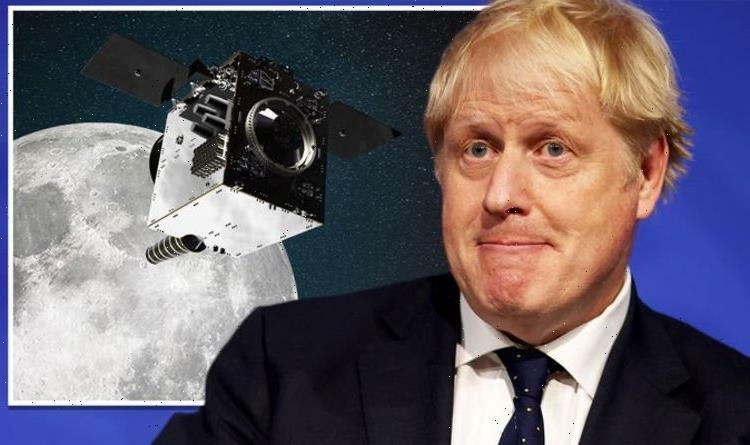Spaceport Cornwall: Newquay set to be hub of UK space travel
We use your sign-up to provide content in ways you’ve consented to and to improve our understanding of you. This may include adverts from us and 3rd parties based on our understanding. You can unsubscribe at any time. More info
The Lunar Pathfinder project will pave the way for human explorers to set foot on the Moon for the first time in 50 years. Guildford-based company Surrey Satellite Technology Ltd (SSTL) has struck a deal with “anchor customer” European Space Agency (ESA) on the launch of a small communications satellite to the far side of the Moon. The satellite will facilitate easier communications with spacecraft and rovers on the lunar surface.
SSTL is presently pencilled in to launch Lunar Pathfinder in 2024.
The satellite will remain in a “frozen” orbit above the lunar south pole, where space agencies like NASA are looking to set up camp.
The satellite will communicate with other missions in S-band and UHF frequencies, and beam back signals to ground stations on Earth in X-band.
Science Minister Amanda Holloway welcomed the development and hailed the UK’s contributions to international space exploration efforts.


She said: “Surrey Satellite Technology has taken Britain’s expertise in navigation and telecommunications to the next level.
“Having already delivered state-of-the-art communications services to the International Space Station, UK technology will now help sustainable return to the Moon for the first time in nearly 50 years.
“By investing in our space sector, including £11.6million today for the Lunar Pathfinder satellite, we are helping UK companies to support major international missions, firmly securing our place as a world-leading space nation.”
The Lunar Pathfinder mission is being supported by £11.6million in UK Space Agency funding via ESA.
Moon landing: Neil Armstrong on 'conspiracy theories' in 2011
In May this year, SSTL, Inmarsat and MDA UK were picked by the UK Space Agency to lead a study under ESA’s Moonlight initiative.
According to ESA, the crewed and robotic exploration of the Moon’s surface will require a network of deep-space navigation and telecommunication satellites.
Towards this goal, ESA has been working with the private sector to meet the growing demands for deep space communications.
Phil Brownnett, managing director of SSTL, said: “We are delighted to sign up ESA as our anchor customer for communication services from our Lunar Pathfinder mission.


“We have been collaborating with ESA since 2018 to scope our Lunar Pathfinder mission for the commercial market, and we look forward to realizing our ambition to provide cost-effective services and navigation data for lunar assets.”
Lunar Pathfinder has also been selected by NASA and ESA to fly a number of other payloads to the Moon.
These include an ESA GNSS receiver that will pick up signals from GPS and Galileo satellites and a NASA laser reflector.
The mission will, consequently, act as a proof-of-concept for a bigger communications and navigations network around the Moon.
Nelly Offord, the exploration business manager at SSTL, told the BBC: “Pathfinder will be hosting a weak signal detection receiver from ESA.
“Effectively, the idea is to test how signals from GPS or Galileo at Earth can be detected from lunar orbit and then used for navigation of lunar assets.”
ESA is presently working with NASA on a deal to launch the Lunar Pathfinder satellite, in exchange for access to the satellites services.
Lunar Pathfinder is expected to remain operational for at least eight years, during which it will communicate with a range of missions.
Source: Read Full Article
